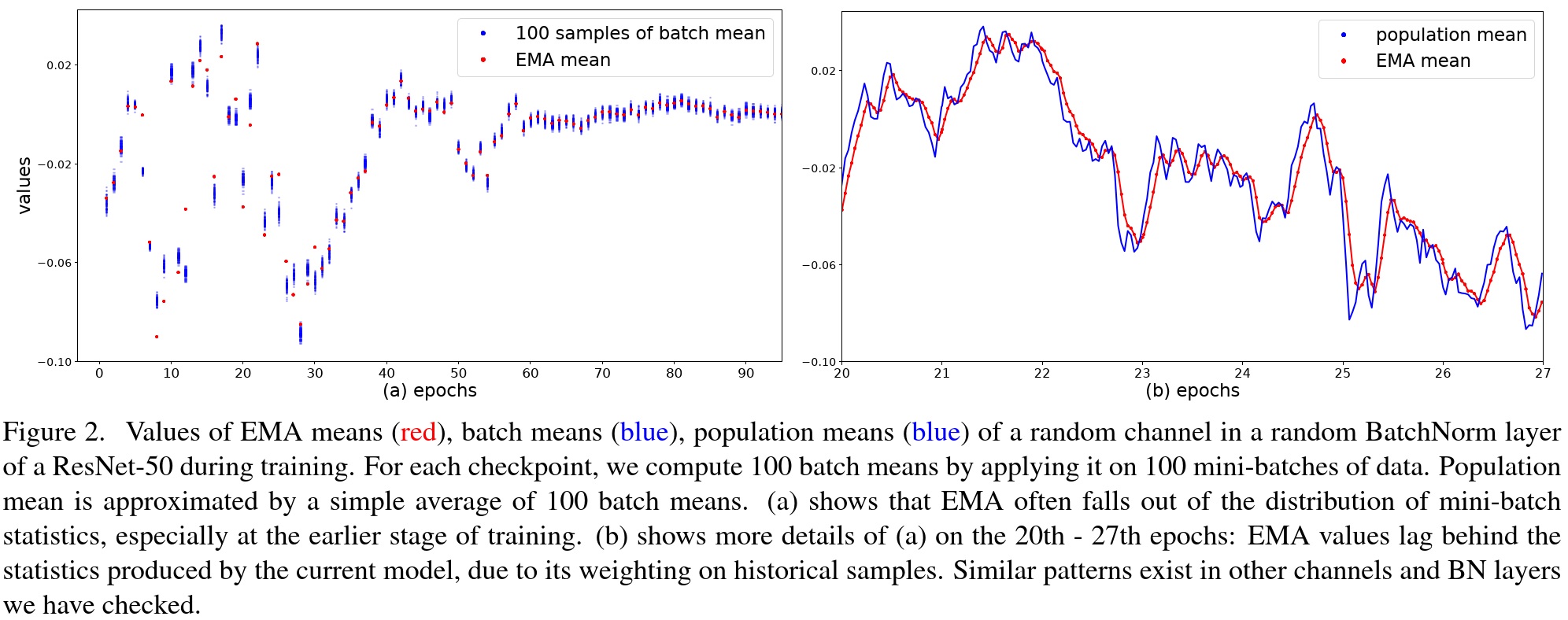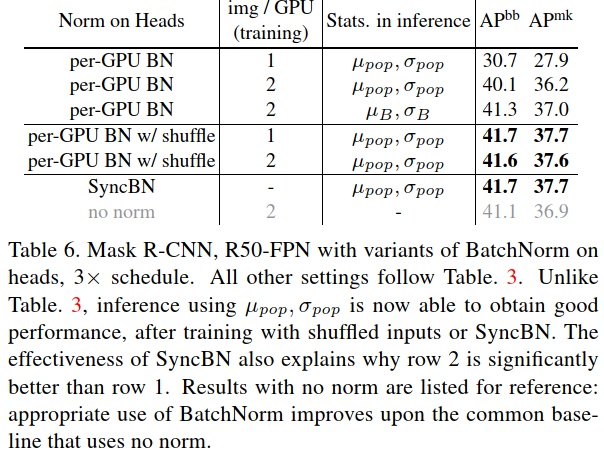| author: | chengchunhsu |
| score: | 7 / 10 |
A short review on BatchNorm
In the paper, BatchNorm is described as a “necessary evil” in the design of CNNs
-
Improving model convergence speed
-
Regularizing effect to combat overfitting


Sampling strategies:
- Training: mini-batch samples
- Inference: whole dataset
Design issue: how to compute μ and σ^2?
- Size
- Data source
- Algorithm to compute the statistics
Issue #1: Compute μ and σ^2 during training
Discussion between two statistics computation methods - EMA and PreciseBN.
Exponential moving average (EMA):
- Updated in every training iteration

- Problems:
- When λ is large - the statistics are outdated
- When λ is small - ignore the whole population

PreciseBN:
- Apply the (fixed) model on many mini-batches to collect batch statistics
- Aggregate the per-batch statistics into population statistics
Result:
- PreciseBN is better and also more stable than with EMA (for image classification on ImageNet)
- EMA produces extremely high variance validation results under a larger batch size
- PreciseBN only requires 10^3 ∼ 10^4 samples for the near-optimal result
Issue #2: inconsistent behaviors between training and inference
The gap between population statistics and mini-batch statistics introduces inconsistency.
Strategy #1: using mini-batch during inference
-
Method: compute population statistics based on mini-batch instead during inference
-
Result: train-test inconsistency is reduced
Strategy #2: using population batch during training
-
Method: apply FrozenBN in the last few epochs
-
Result: train-test inconsistency is reduced when the batch size is small
Issue #3: batch from diverse domains/sources
BatchNorm can be considered as two separate phases:
- Features learned by SGD
- Population statistics trained using the features by EMA or PreciseBN
What if multiple domains involving during training and inference?
Domain gaps occur between the inputs in:
- SGD training
- Population statistics training
- Testing generalization
Let’s discuss two scenarios.
Scenarios #1: a model is trained on one domain but tested on others
-
Solution: re-compute the statistics during inference
-
Result:
- Train-test inconsistency is reduced
- Yet the gap between SGD and population statistics during training still worth more attentions
Scenarios #2: a model is trained on multiple domains (in this case we mean feature layers).
- Solution:
-
- compute unique population statistics for each feature level
- normalize with the same set of population statistics for all feature levels
-
- Result:
- For multi-domains, SGD-statistics-testing consistency is crucial for performance
- Whether the affine layer is shared or not has little impact
Issue#4: information leakage within a batch
Unwanted batch-wise information might be exploited since the model learned from a mini-batch rather than an individual sample.
Some example:
- Mini-batches that have the same class label
- Region of interests (RoIs) from the same image in object detection
Solutions:
- Ghost BatchNorm - normalize over a subset of multiple images from different classes
- SyncBN - normalize across all batch on different GPUs
- Random shuffle the RoIs features among GPUs
Result: both SyncBN and random shuffle can alleviate the leakage issue.

TL;DR
- Make sure population statistics do not fall behind the mini-batch statistics
- Train-test inconsistency is crucial in BatchNorm
- Avoid bias when sampling mini-batch